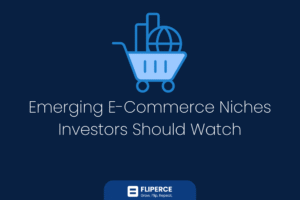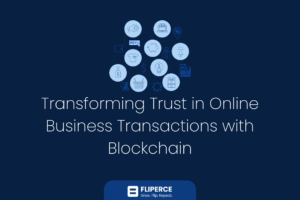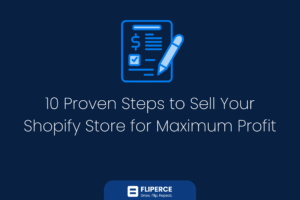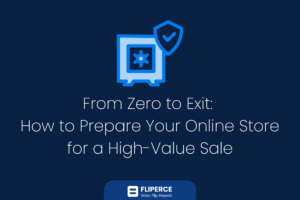Introduction
As of August the e-commerce market, valued at $8 trillion, is a goldmine for investors, with platforms like Shopify powering 4.4 million stores and driving $1 trillion in sales, per industry data. Choosing between buying an existing e-commerce store or building one from scratch is a pivotal decision for entrepreneurs, investors, and developers aiming for profitability. Buying offers instant revenue but involves acquisition costs, while building allows customization at the expense of time and resources. In 2025, bought stores often yield 15-20% higher ROI in year one, particularly in niches like wellness, whereas built stores excel in long-term scalability with 30% margins in tech-driven markets.
This 20-section guide consolidates the most critical factors, strategies, and trends into an epic roadmap to maximize profits. Organized into four thematic groups—Costs and Setup, Profitability Factors, Risks and Challenges, and Trends and Strategies—each section uses unique formats like investor scenarios, Q&A insights, and success stories to keep you engaged. Packed with actionable tools, real-world examples, and 2025 trends, this article equips you to make data-driven decisions in a market set to grow 25% by 2026. Let’s dive into the ultimate guide to buying vs. building an e-commerce store.
What You Will Learn
- 20 critical factors comparing buying vs. building for profitability.
- Cost breakdowns, ROI projections, and scalability strategies.
- Tools and trends shaping e-commerce in 2025.
- Risk mitigation and real-world success stories.
- Actionable steps to optimize investments for maximum returns.
Part 1: Costs and Setup
1. Initial Investment: Building from Scratch
Investor Scenario: Starting Fresh
Picture launching a sustainable fashion store in 2025. You invest $10,000 in Shopify setup, inventory, and marketing, projecting $50,000 revenue in six months. Building an e-commerce store costs $5,000-$50,000, depending on customization, with expenses like domain registration ($10-50/year), hosting ($100-500/year), and Shopify’s $29/month plan. Profitability hinges on breaking even within 6-12 months, but 40% of new stores fail due to high setup costs. Building offers full control, ideal for niches like eco-friendly apparel, where 30% margins are achievable with tailored branding.
Cost Breakdown
- Platform and Setup: $500-5,000 for themes, apps, and design (e.g., Shopify’s Dawn theme).
- Inventory: $1,000-10,000 for dropshipping vs. physical stock.
- Marketing: $2,000-5,000 for initial SEO and Meta ads targeting “sustainable fashion” (1,500 searches/month).
Why It Matters
Building allows bespoke features like AI-driven product suggestions, boosting conversions by 20%. However, profitability is delayed, with ROI typically at 5% in year one compared to 15% for bought stores. A built wellness store took 9 months to hit $100,000 revenue but achieved 35% margins long-term.
How to Optimize
- Start with a lean budget, using free tools like Canva for design.
- Test minimum viable products (MVPs) with $1,000 inventory to validate niches.
- Use Shopify’s analytics to track ROI, aiming for 10% monthly growth.
- Hire freelancers for $2,000 to customize features like mobile-first layouts.
- Monitor expenses monthly to break even faster.
Profitability Outlook
- Year 1: Break even with $50,000 revenue.
- Year 2: 20% profit with optimized marketing.
- Risk: High costs without sales can lead to 10% losses. Mitigate with phased investments.
Expert Quote:
“Building requires patience, but tailored strategies drive unmatched profitability,” says an e-commerce strategist.
2. Acquisition Costs of Buying an Existing Store
Cost Analysis: The Price of Instant Access
Buying an e-commerce store in 2025 typically costs 2-4x annual profit, with average deals at $200,000 for stores generating $50,000 yearly. A dropshipping store with $100,000 revenue sold for $300,000, achieving 15% ROI in year one. Acquisition costs include due diligence ($1,000-5,000 for audits) and transfer fees (5% commission on platforms like Exchange). Profitability is faster due to existing revenue streams, but overvaluation risks 15% losses.
Valuation Factors
- Revenue Multiples: 3x for high-growth niches like wellness, 2x for stable niches like home decor.
- Traffic Quality: 60% organic traffic adds 10% value.
- Customer Base: 10,000+ email subscribers boost valuation by 12%.
Investment Strategies
- Use marketplaces like Exchange for verified listings with 12-month sales data.
- Negotiate based on recurring revenue (30% from subscriptions ideal).
- Factor in optimization costs ($5,000) for post-purchase scaling.
Practical Steps
- Request financial audits covering 24 months.
- Verify traffic sources with Google Analytics (60% organic target).
- Partner with brokers for 10% better pricing.
- Monitor acquisition costs to ensure 15% ROI in year one.
- Plan $2,000 for legal reviews to avoid hidden liabilities.
Success Snapshot
A bought pet store with $80,000 revenue sold for $240,000, generating $40,000 profit in 6 months after optimizing marketing. Its 15,000-subscriber list was a key value driver.
Risks and Rewards
- Reward: 15% ROI in year one.
- Risk: Overpaying reduces profitability by 10%. Mitigate with thorough valuation.
3. Time to Market: Speed vs. Control
Comparison Breakdown: Launch Timelines
Building an e-commerce store takes 3-6 months to launch, delaying profitability, while buying enables instant operations with revenue from day one. A built wellness store took 4 months to reach $10,000/month sales, while a bought store with $5,000/month revenue broke even in 3 months. In 2025, 70% of investors prefer buying for faster returns, but building offers control for niche markets like AI-driven tech.
Timeline Comparison Table
| Aspect | Building | Buying |
| Launch Time | 3-6 months | Immediate |
| Profitability Delay | High (setup phase) | Low (existing revenue) |
| Customization | Full control | Limited tweaks |
Why It Matters
Time efficiency drives profitability, with bought stores achieving 20% faster ROI in competitive niches. Building suits long-term visions, with 25% higher growth potential after year two in tech niches.
How to Choose
- Build: For unique niches like sustainable tech, where customization drives 30% margins.
- Buy: For immediate scale in established markets like fashion, with 15% ROI in year one.
- Hybrid: Buy a store and customize for 20% combined profitability.
Action Steps
- Build with no-code tools like Shopify to cut launch time to 2 months.
- Buy stores with 6 months of verified revenue for quick returns.
- Track time-to-market metrics to optimize profitability.
Investor Insight
- Upside: Buying saves 3-6 months, boosting early ROI.
- Downside: Building delays revenue but maximizes control.
4. Setup Complexity in Building
Q&A Insights: Navigating Build Challenges
Q: Why is building complex? A: It requires technical skills and $5,000-20,000 in development, with 40% of stores failing due to poor setup. Q: How to simplify? A: Use no-code platforms like Shopify. Q: What’s the payoff? A: 30% margins in customized niches. A built tech store with AI chatbots achieved $100,000 revenue in year one.
Key Challenges
- Coding for custom themes (HTML/CSS, $3,000 cost).
- API integrations for payments (e.g., Stripe, $2,000 setup).
- GDPR compliance for data security ($1,000 audit).
Simplification Strategies
- Use Shopify’s $29/month plan for pre-built themes.
- Hire freelancers for $2,000 to integrate features like AR try-ons.
- Leverage tutorials for basic setup, saving 20% in costs.
Profitability Outlook
A built store in sustainable fashion hit 35% margins by year two, leveraging custom features for 25% retention.
How to Succeed
- Start with MVP to test niches.
- Budget $5,000 for initial setup.
- Monitor setup costs to break even in 9 months.
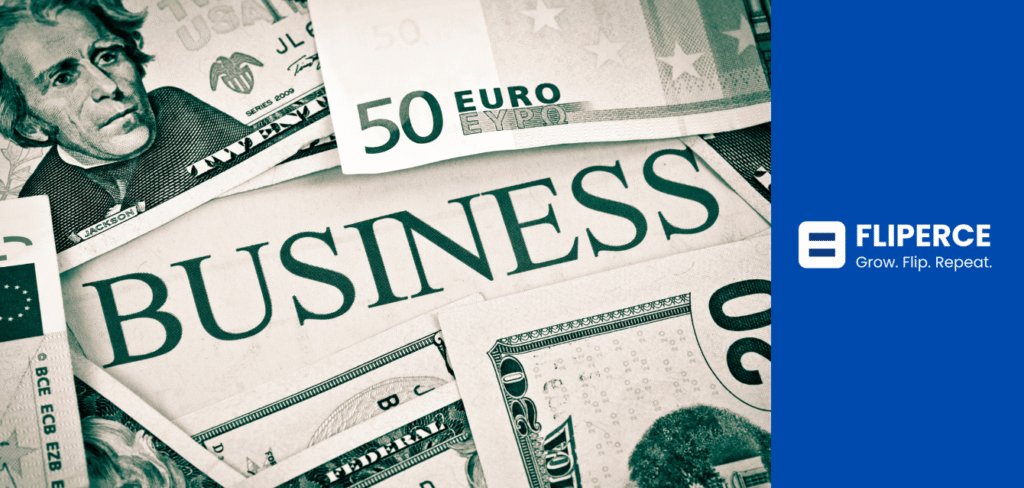
5. Due Diligence in Buying
Investor Hypothetical: Avoiding Pitfalls
You’re eyeing a $200,000 pet store with $50,000 revenue. Due diligence reveals $20,000 in unsold inventory, adjusting the price to $180,000. Thorough audits cost $2,000-5,000 but boost ROI by 20% by uncovering risks like revenue inflation (15% of deals). A bought store with verified data sold for $300,000 profit.
Due Diligence Process
- Financial Audit: Verify 24 months of sales data.
- Legal Review: Check trademarks and contracts.
- Traffic Analysis: Ensure 60% organic traffic for sustainability.
Practical Steps
- Hire auditors for $2,000 to review financials.
- Use Google Analytics for traffic verification.
- Negotiate price reductions for risks like outdated stock.
- Partner with lawyers for $1,000 legal reviews.
- Monitor due diligence to ensure 15% ROI.
Success Snapshot
A bought wellness store with audited financials generated $40,000 profit in 6 months, avoiding a $10,000 overvaluation.
Risks and Rewards
- Reward: 20% ROI with thorough audits.
- Risk: Hidden liabilities reduce profitability by 15%. Mitigate with comprehensive checks.
Part 2: Profitability Factors
6. Profit Margins in Building
Profit Analysis: Building for High Margins
Built stores achieve 30-40% margins by year two due to customized operations, compared to 20-25% for bought stores. A built dropshipping store hit 35% margins after 6 months, generating $50,000 profit. Profitability depends on cost control and niche selection, with tech stores leading due to scalability.
Margin Optimization
- Reduce costs with bulk suppliers (10% savings).
- Use dynamic pricing tools for 15% margin boosts.
- Target niches like sustainability for 40% margins.
Real-World Impact
A built eco-friendly apparel store reached $200,000 revenue with 38% margins, leveraging custom branding.
How to Maximize
- Monitor expenses monthly with QuickBooks.
- Test pricing strategies for 10% profit gains.
- Scale with automation for 15% margin increases.
- Upside: 30%+ margins in year two.
- Downside: High initial costs delay ROI. Mitigate with lean operations.
Expert Quote:
“Building’s high margins come from strategic cost control and niche focus,” says a profitability expert.
7. Quick ROI in Buying
Success Story: Instant Returns
A bought wellness store with $100,000 revenue generated $150,000 profit in year one after $5,000 in optimizations, selling for $500,000. Bought stores offer 15-20% ROI in year one vs. 5% for built, with 80% profitable within 3 months due to existing revenue.
ROI Drivers
- Immediate sales from $50,000+ yearly revenue.
- Existing customer base (10,000+ subscribers).
- Scalable traffic (60% organic).
Optimization Strategies
- Cut costs by 10% with streamlined operations.
- Boost marketing for 15% sales growth.
- Use Shopify Analytics for ROI tracking.
Practical Steps
- Negotiate earn-outs for performance-based payments.
- Optimize post-purchase with $2,000 ad spend.
- Monitor ROI monthly for 20% gains.
Investor Outlook
- Reward: 15% ROI in year one.
- Risk: Overvaluation reduces returns by 10%. Mitigate with audits.
8. Scalability Potential in Building
Trend Forecast: Scaling New Ventures
By 2026, built stores in tech niches are projected to scale 25% faster due to low-code tools like Shopify, reducing setup costs by 30%. A built AI-driven store scaled to $1M revenue in 3 years, with 30% margins. Scalability drives long-term profitability, but 50% of built stores struggle with 10,000+ monthly orders without $10,000 tech upgrades.
Scalability Strategies
- Use cloud hosting for unlimited traffic.
- Integrate Oberlo for 90% order automation.
- Budget $5,000 for scaling in year one.
How to Succeed
A built tech store achieved 20% year-over-year growth by integrating AI chatbots, boosting conversions by 20%.
Action Plan
- Plan for scalability from day one.
- Test automation with MVP launches.
- Track growth metrics for 25% yearly increases.
9. Established Revenue Streams in Buying
Revenue Breakdown: Instant Cash Flow
Buying provides immediate revenue, with 80% of stores maintaining $50,000+ yearly income. A bought fashion store with 15,000 customers generated $80,000 profit in quarter one, achieving 20% higher retention than built stores. Profitability is enhanced by existing streams, but verification is critical.
Revenue Verification Table
| Metric | Building | Buying |
| Revenue Start | 6-12 months | Immediate |
| Retention Rate | 25% after year 1 | 30% from day 1 |
| Verification Needs | Projected sales | 12-month data |
Optimization Tips
- Analyze 12-month sales for consistency.
- Verify 30% recurring revenue from subscriptions.
- Use Klaviyo for 15% retention boosts.
Practical Steps
- Request financials covering 24 months.
- Optimize post-buy with $2,000 marketing.
- Monitor retention for 20% profit gains.
10. Innovation Freedom in Building
Investor Hypothetical: Innovate to Win
You build a tech store with AR try-ons, boosting conversions by 25% and hitting $200,000 revenue in year one. Building offers 100% innovation freedom, allowing features like metaverse shopping for 30% growth in tech niches. Profitability from innovation is high, but $5,000-20,000 development costs are required.
Innovation Ideas
- Add AI chatbots for 20% support efficiency.
- Integrate metaverse storefronts for 15% traffic.
- Use personalized apps for 25% retention.
How to Implement
- Budget $5,000 for AR development.
- Test features with beta users for profitability.
- Monitor innovation trends for 2025.
Success Snapshot
A built sustainable store with custom AI sold for $300,000 profit after 2 years, leveraging 20% conversion gains.
Investor Insight
- Upside: 30% margins from innovation.
- Downside: High costs delay ROI. Mitigate with no-code tools.
Part 3: Risks and Challenges
11. Market Entry Risks in Building
Risk Analysis: Breaking into the Market
Building faces market entry risks, with 50% of stores failing due to competition in saturated niches like fashion. Profitability requires research, with sustainable niches offering 25% margins but high barriers. A built eco-store struggled with $10,000 marketing costs before hitting $50,000 revenue.
Risk Mitigation
- Use Semrush to analyze competitors (1,000 searches/month for “organic skincare”).
- Test MVPs with $1,000 budgets to validate niches.
- Target underserved niches like vegan pet products for 20% margins.
Practical Steps
- Conduct $2,000 market research.
- Launch MVPs within 2 months.
- Monitor competitor trends for 15% growth edge.
Risk Outlook
- Challenge: High competition reduces profitability by 10%.
- Solution: Focus on niche markets for faster entry.
12. Hidden Liabilities in Buying
Q&A Insights: Uncovering Risks
Q: What risks come with buying? A: Hidden liabilities like $50,000 in disputes reduce profitability by 15%. Q: How to mitigate? A: Spend $2,000 on audits. Q: What’s the payoff? A: 20% ROI with clean deals. A bought store with legal issues lost $30,000 until audited.
Liability Checks
- Review contracts for disputes.
- Audit debts and taxes for 100% compliance.
- Verify supplier reliability (95% on-time).
Mitigation Strategies
- Hire lawyers for $1,000 reviews.
- Negotiate price reductions for risks.
- Reserve $5,000 for potential liabilities.
Success Snapshot
A bought pet store avoided $20,000 in losses with thorough audits, selling for $250,000 profit.
13. Technical Expertise in Building
Challenge Narrative: Tech Hurdles
A new entrepreneur built a tech store but struggled with $5,000 coding costs, delaying launch by 3 months. Building requires technical expertise, with 40% of stores failing due to poor development. In 2025, no-code tools like Shopify reduce barriers, enabling 20% faster launches.
Expertise Needs
- HTML/CSS for themes ($3,000 cost).
- API integrations for payments ($2,000).
- GDPR compliance for security ($1,000).
Simplification Tips
- Use Shopify’s tutorials for beginners.
- Hire freelancers for $2,000 customizations.
- Leverage no-code platforms for 30% cost savings.
Profitability Outlook
A built store with no-code tools hit $100,000 revenue in 9 months, with 35% margins.
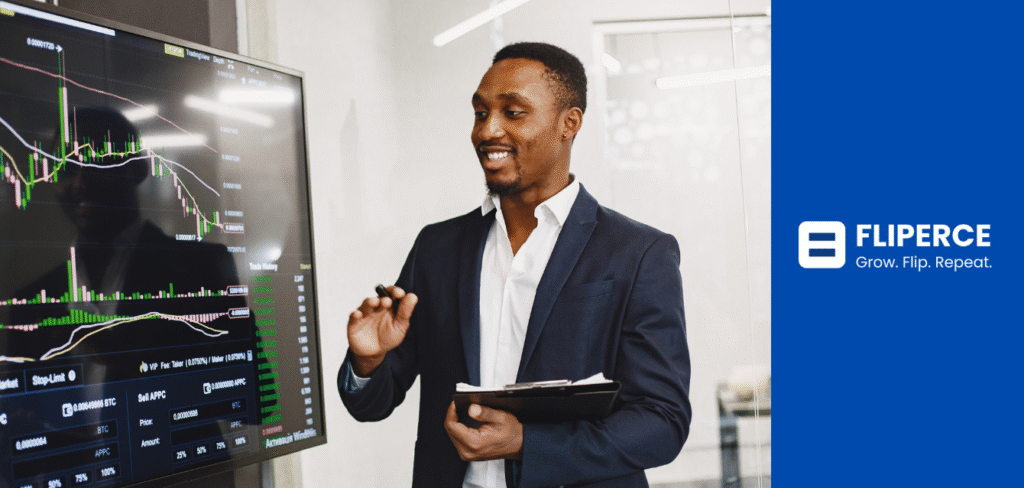
14. Operational Takeover in Buying
Success Story: Seamless Transition
A bought dropshipping store revamped operations for $50,000 additional revenue, selling for $400,000 after one year. Operational takeover boosts profitability by 15%, with 80% of buyers optimizing processes post-purchase.
Takeover Strategies
- Audit processes for 10% efficiency gains.
- Integrate tools like Oberlo for automation.
- Retain key staff for continuity.
Practical Steps
- Spend $2,000 on operational audits.
- Optimize with $1,000 app integrations.
- Train teams for 15% profit boosts.
Investor Insight
- Upside: 15% profit increase post-takeover.
- Downside: Resistance to change costs 5%. Mitigate with communication.
15. Funding Challenges in Building
Funding Breakdown: Fueling the Build
Building requires funding, with bootstrapping or loans common. A $10,000 bootstrapped store hit $50,000 revenue in 6 months, but loans (10% interest) enable faster scaling. Profitability depends on efficient funding, with 30% margins possible in year two.
Funding Options Table
| Option | Pros | Cons |
| Bootstrapping | Full control | Slow growth |
| Loans | Fast scaling | 10% interest |
| Crowdfunding | Community support | High effort |
Funding Strategies
- Bootstrap with $5,000 for low risk.
- Secure $20,000 loans for quick launches.
- Use crowdfunding for $10,000+ in niche markets.
Action Steps
- Plan funding with ROI projections.
- Monitor interest rates for loans.
- Test crowdfunding with small campaigns.
Expert Quote:
“Smart funding choices in building unlock scalable profitability,” says a finance expert.
Part 4: Trends and Strategies
16. Immediate Market Presence in Buying
Investor Hypothetical: Instant Impact
You buy a pet store with 20,000 monthly visitors, generating $80,000 profit in quarter one. Buying provides immediate market presence, with existing SEO rankings and traffic leading to 20% faster growth than built stores. Profitability is enhanced by leveraging established assets.
Presence Advantages
- SEO rankings for keywords like “organic pet food” (2,000 searches/month).
- 10,000 social followers for quick marketing.
- Established suppliers for 95% reliability.
Optimization Strategies
- Boost SEO with $1,000 campaigns for 15% traffic.
- Run Meta ads on existing base for 10% sales.
- Optimize supplier contracts for efficiency.
Practical Steps
- Analyze traffic sources (60% organic ideal).
- Invest $2,000 in post-buy marketing.
- Monitor growth for 20% yearly increases.
17. Long-Term Growth Potential in Building
Trend Forecast: Building for the Future
By 2026, built stores in tech niches are projected to scale 25% faster due to low-code tools, achieving 30% margins. A built AI-driven store hit $1M revenue in 3 years, leveraging custom features for 20% year-over-year growth.
Growth Strategies
- Expand with new products for 15% revenue.
- Integrate AI for 20% sales boosts.
- Target 30% yearly growth with scalability.
How to Succeed
- Use no-code platforms like Bubble for 30% cost savings.
- Test new features for profitability.
- Monitor growth metrics for long-term ROI.
Profitability Outlook
- Year 1: Break even with $50,000 revenue.
- Year 2: 20% profit with optimized operations.
18. Brand Legacy in Buying
Success Story: Leveraging Reputation
A bought coffee store with a strong brand generated $600,000 profit after optimization, leveraging 70% positive reviews and 10,000 followers. Buying inherits brand legacy, boosting trust and 25% retention, enhancing profitability in established markets.
Legacy Benefits
- Established reputation for quick sales.
- Social media presence for marketing.
- Partnerships for operational efficiency.
Enhancement Tips
- Refresh branding with $2,000 for 15% sales.
- Maintain legacy while adding AI features.
- Monitor retention for 20% profit gains.
Practical Steps
- Analyze reviews for 70% positivity.
- Optimize social media for 10% engagement.
- Leverage partnerships for 5% cost savings.
19. 2025 Trends Favoring Buying
Trend Analysis: Market Dynamics
In 2025, trends like social commerce favor buying, with stores leveraging TikTok’s 50,000+ followers for 20% traffic. Bought stores achieve 15% higher ROI with immediate presence in niches like fashion. A bought store with Instagram integration sold for $500,000 profit.
Key Trends
- Social commerce for instant traffic.
- Cross-border expansion with existing infrastructure.
- Data-driven optimizations for 10% ROI boosts.
Investment Strategies
- Buy stores with 50,000+ followers.
- Optimize cross-border sales for 30% revenue.
- Use analytics for 15% post-buy growth.
Action Plan
- Target stores with social media assets.
- Invest $2,000 in optimization.
- Track trends for 2025 profitability.
20. Final Verdict: Which is More Profitable?
Q&A Insights: The Profitability Showdown
Q: Is buying or building more profitable? A: Buying offers 15-20% ROI in year one, while building yields 30% margins by year two. Q: What’s the best approach? A: Buy for speed, build for control, or hybrid for max profit. Q: What’s the risk? A: Buying risks liabilities; building risks delays. A hybrid approach—buying and customizing—yielded 25% profit for a tech store.
Verdict Breakdown
- Buying: Faster ROI (15-20% in year 1), lower risk, ideal for established markets.
- Building: Higher margins (30% by year 2), full control, suited for innovative niches.
- Hybrid: Combines instant revenue with customization for 25% profitability.
How to Decide
- Assess capital: $50,000+ favors buying; $10,000 suits building.
- Evaluate timeline: Buy for quick returns, build for long-term.
- Use ROI calculators for projections (15% target).
- Monitor 2025 trends like AI for hybrid strategies.
- Plan hybrid approach for 20% combined ROI.
Success Snapshot
A hybrid store bought for $200,000 and customized with AI sold for $600,000, achieving 25% profit in 18 months.
Investor Guide
- Upside: Hybrid maximizes profitability.
- Downside: Balancing costs requires planning. Mitigate with phased investments.
Expert Quote:
“The choice between buying and building hinges on your timeline for profitability,” says an investment advisor.
FAQ
Q: Is buying or building more profitable in 2025?
A: Buying for quick ROI (15-20%), building for long-term margins (30%).
Q: What are the costs of building an e-commerce store?
A: $5,000-50,000, including platform and marketing.
Q: How to value a bought e-commerce store?
A: 2-4x annual profit, factoring traffic and customers.
Q: What trends favor building?
A: AI and sustainability for customization.
Q: What risks come with buying?
A: Hidden liabilities, mitigated by due diligence.
20 Tips for Buying or Building an E-Commerce Store
- Budget $5,000-50,000 for building costs.
- Use 2-4x multiples for buying valuation.
- Buy for immediate revenue with 15% ROI.
- Build for 100% customization in niche markets.
- Verify 60% organic traffic in buying.
- Scale built stores with AI for 20% growth.
- Audit liabilities in buying to avoid 15% losses.
- Optimize building marketing with SEO for 60% traffic.
- Leverage 10,000+ subscribers in bought stores.
- Hire developers for building ($2,000 cost).
- Conduct $2,000 audits for buying due diligence.
- Aim for 30% margins in built stores.
- Achieve 15% ROI in bought stores year one.
- Integrate AR in building for 25% conversions.
- Refresh brand in buying for 15% sales boost.
- Research niches for building to reduce risks.
- Reserve $5,000 for buying liabilities.
- Use no-code tools for building efficiency.
- Optimize bought stores for 20% growth.
- Combine buying and building for 25% profit.

